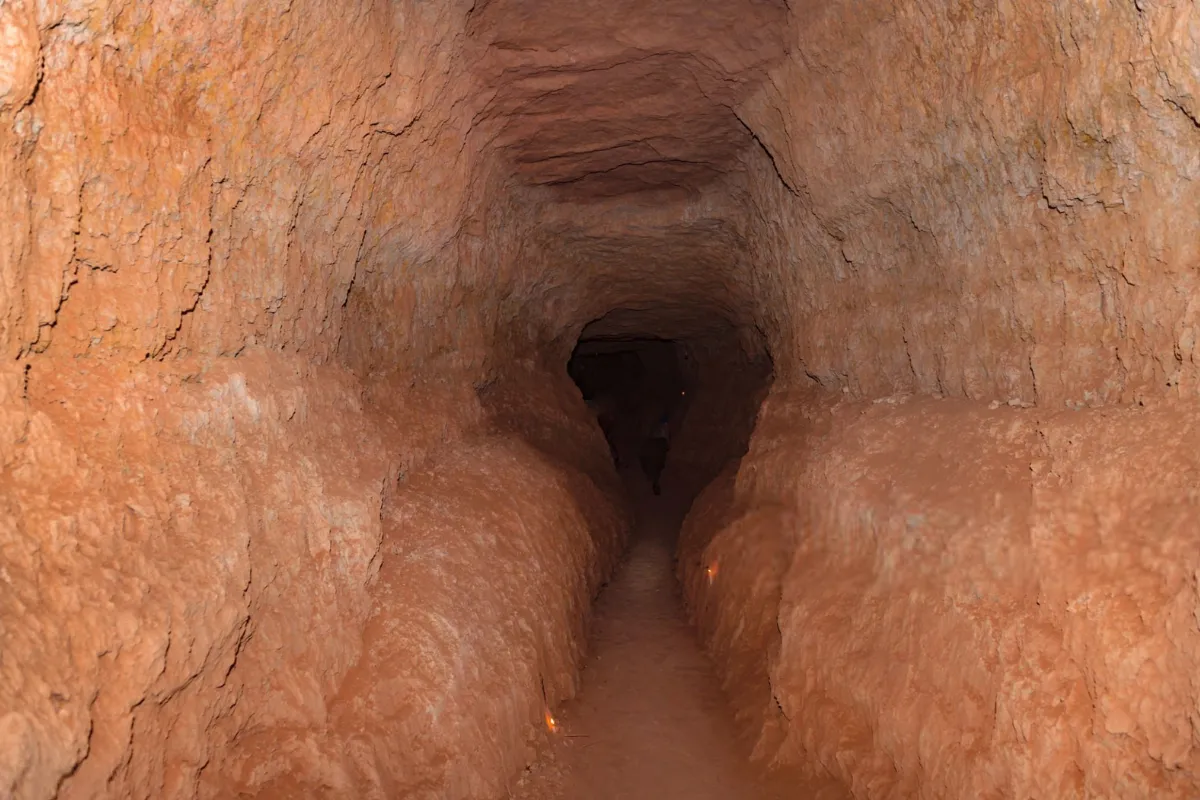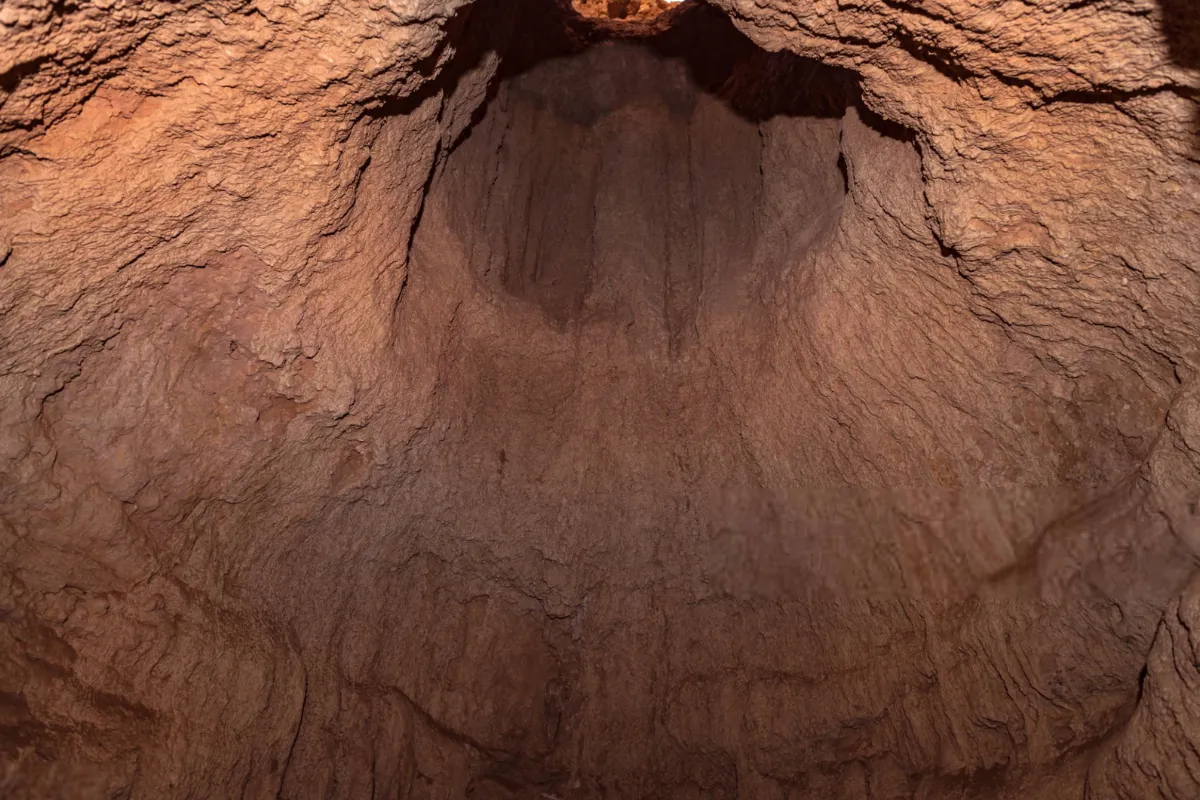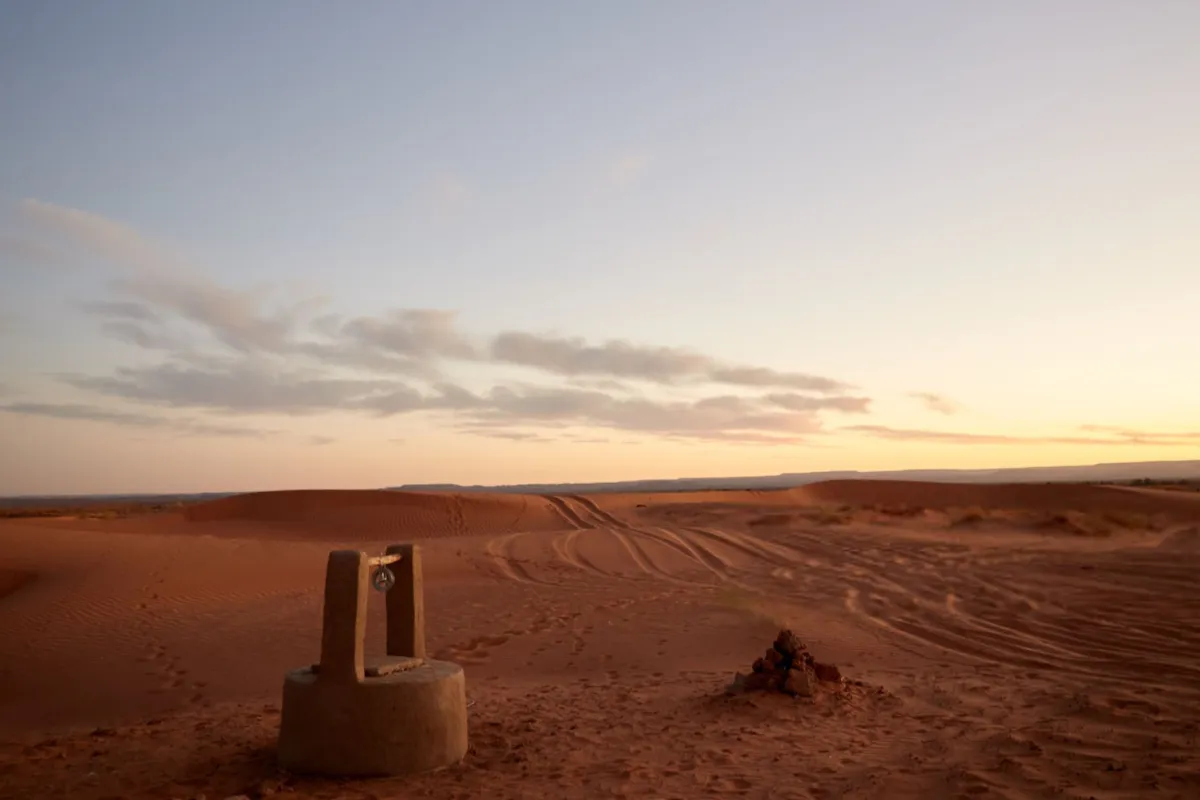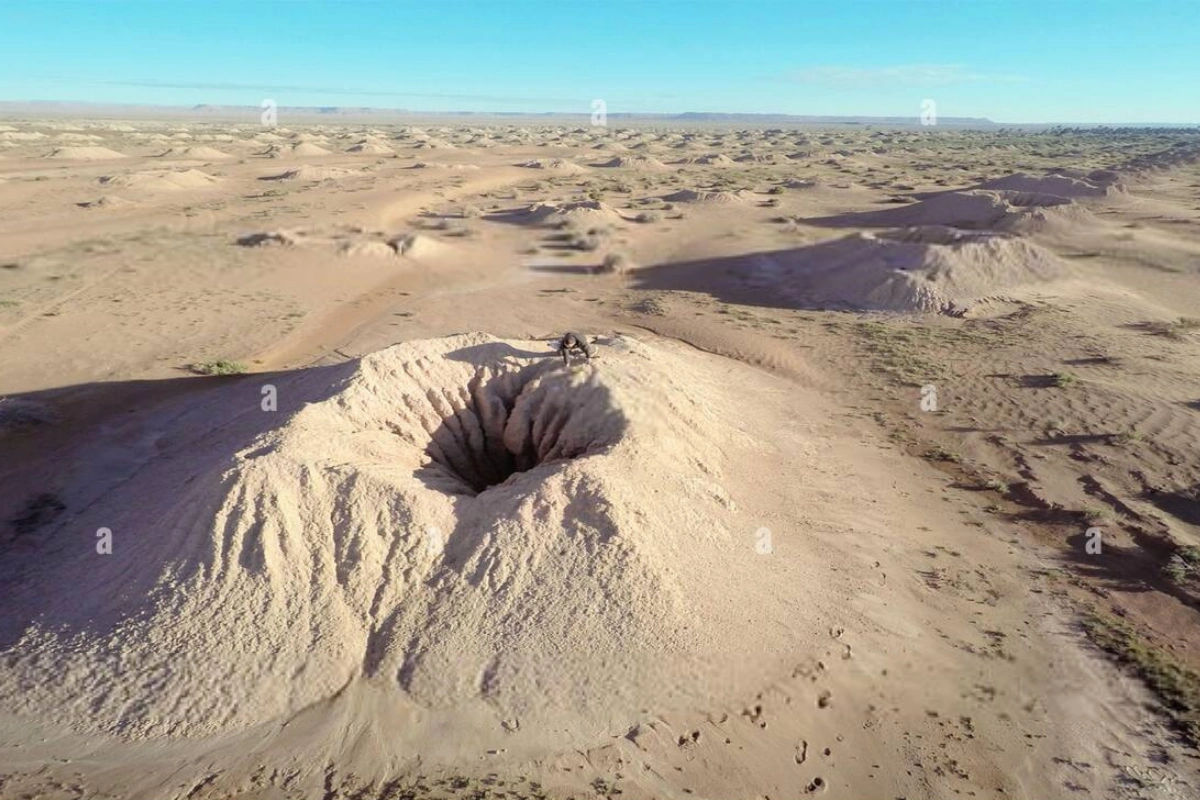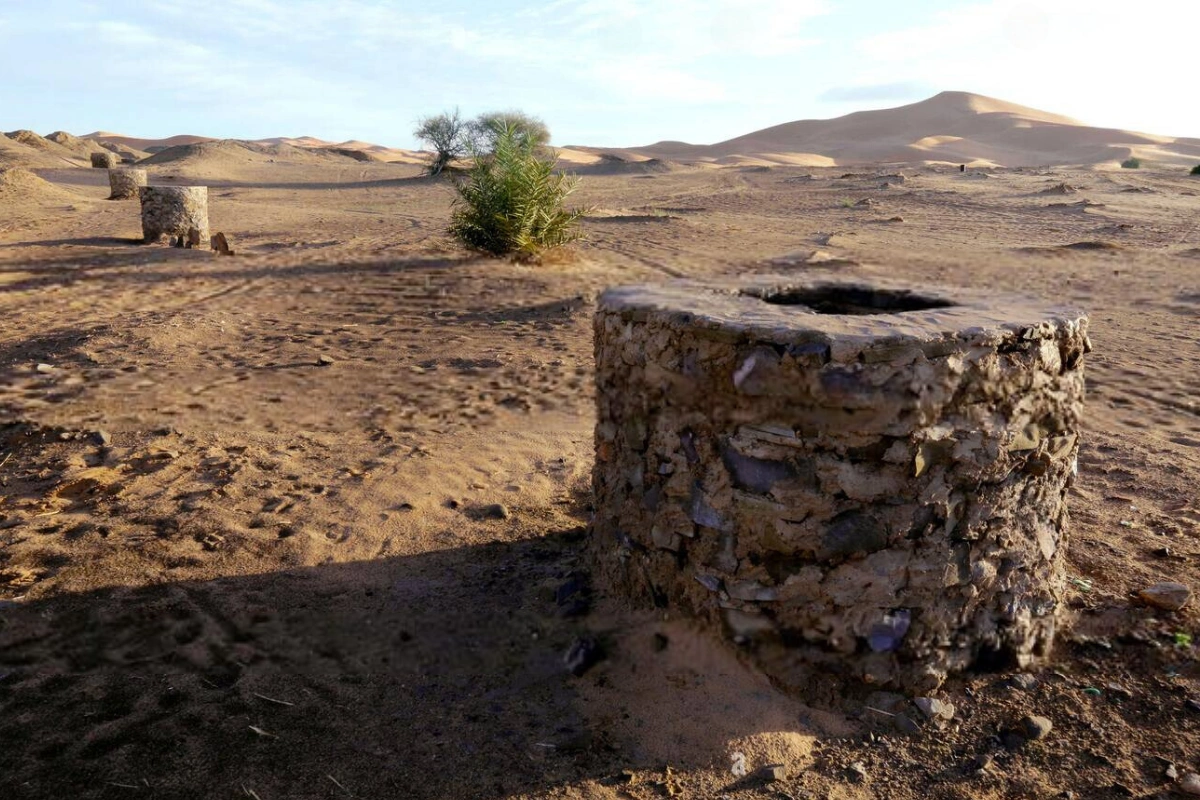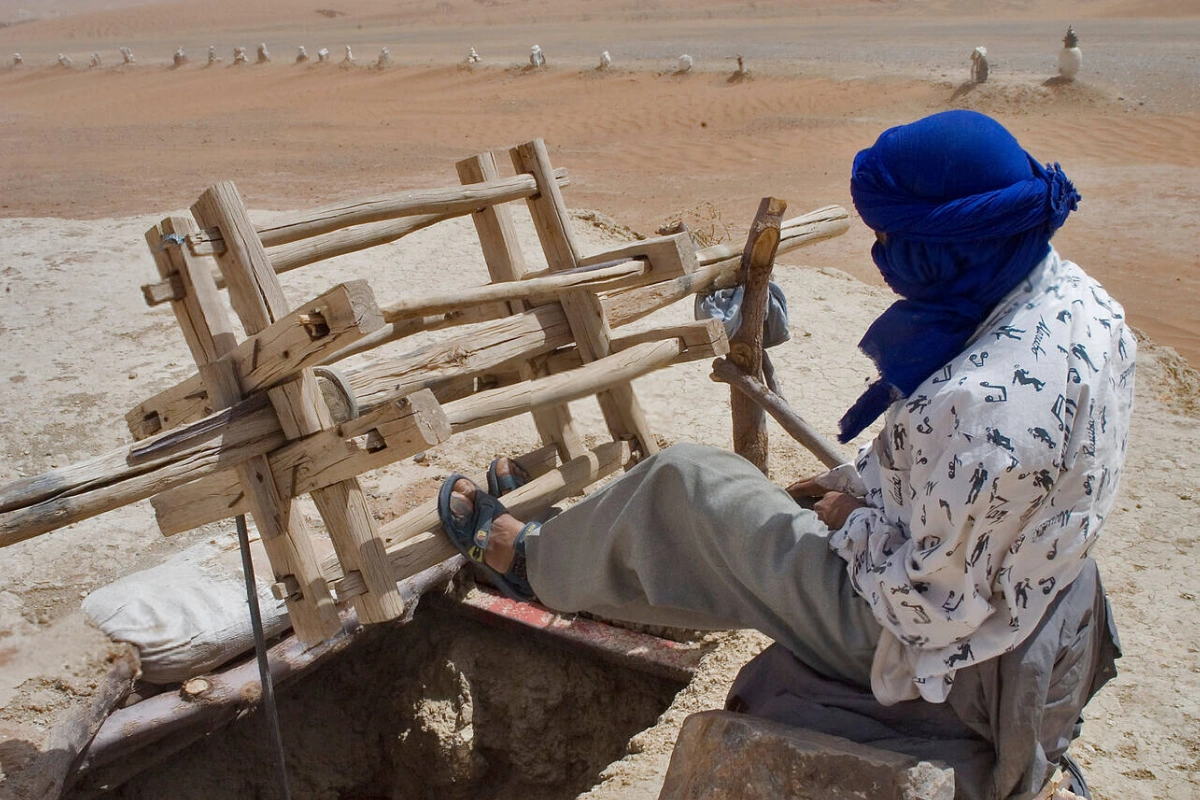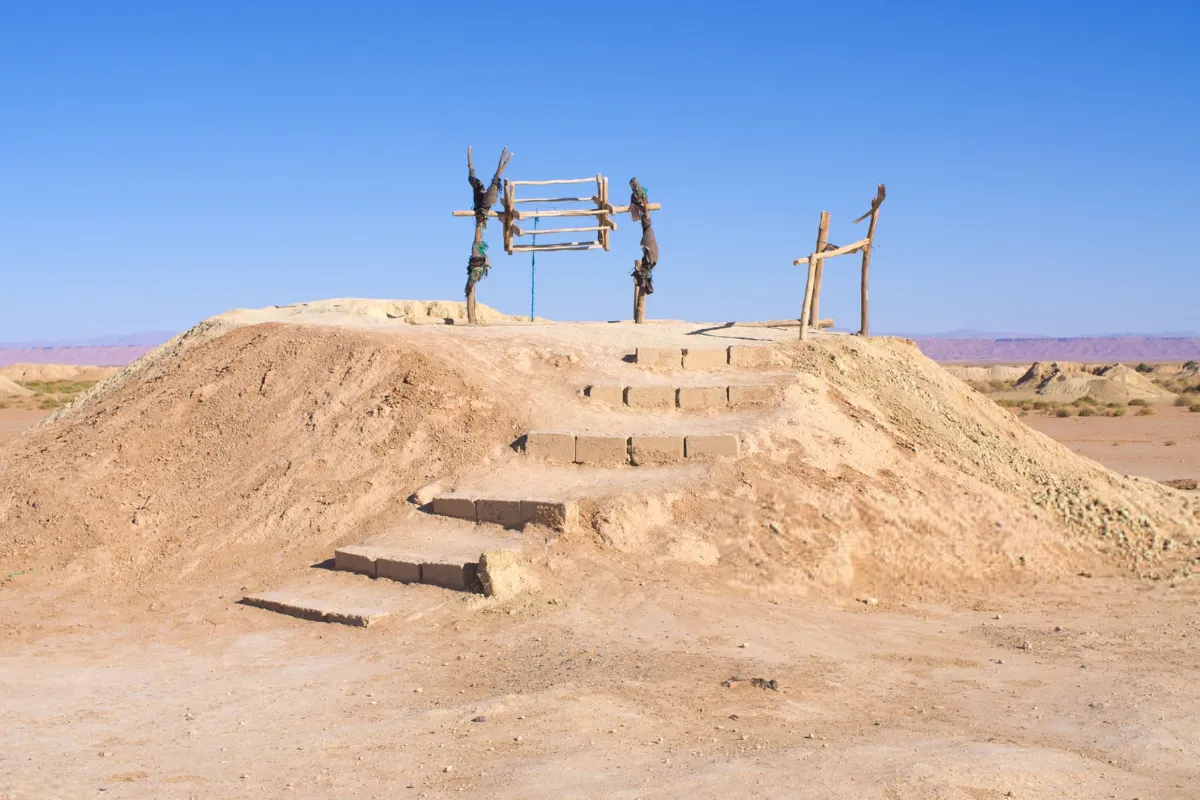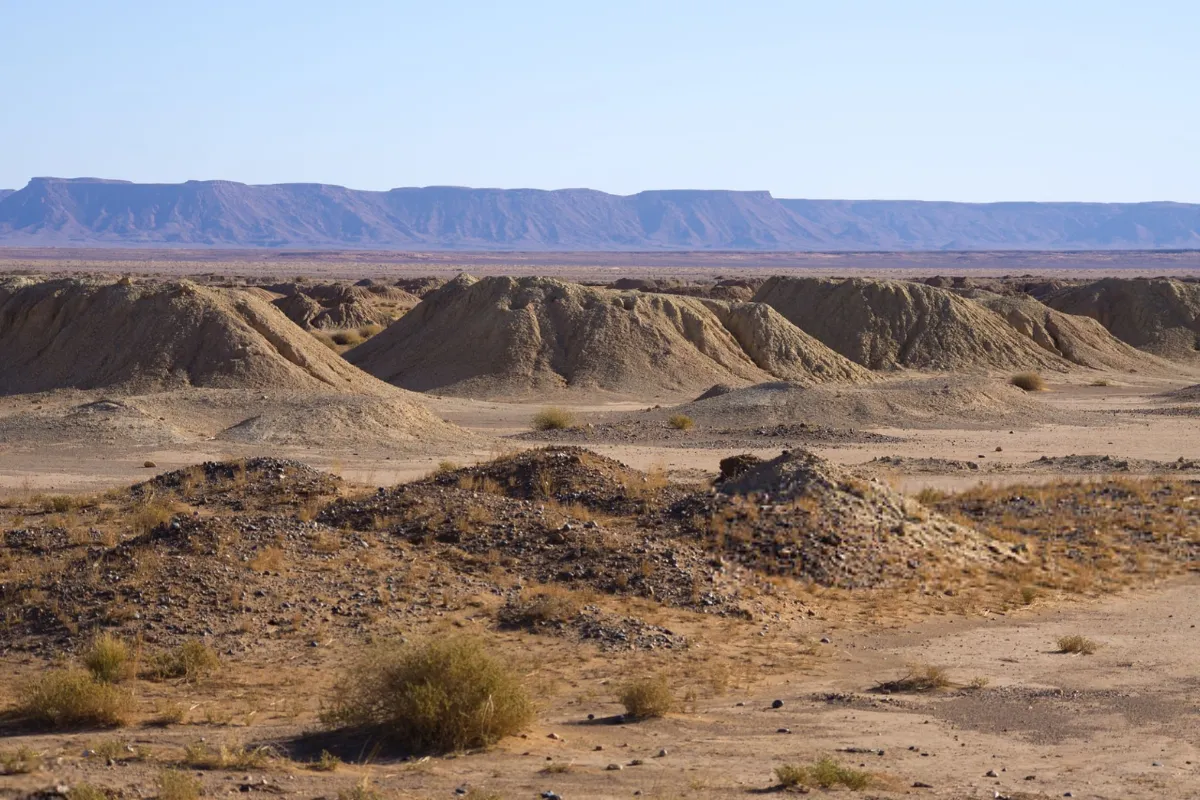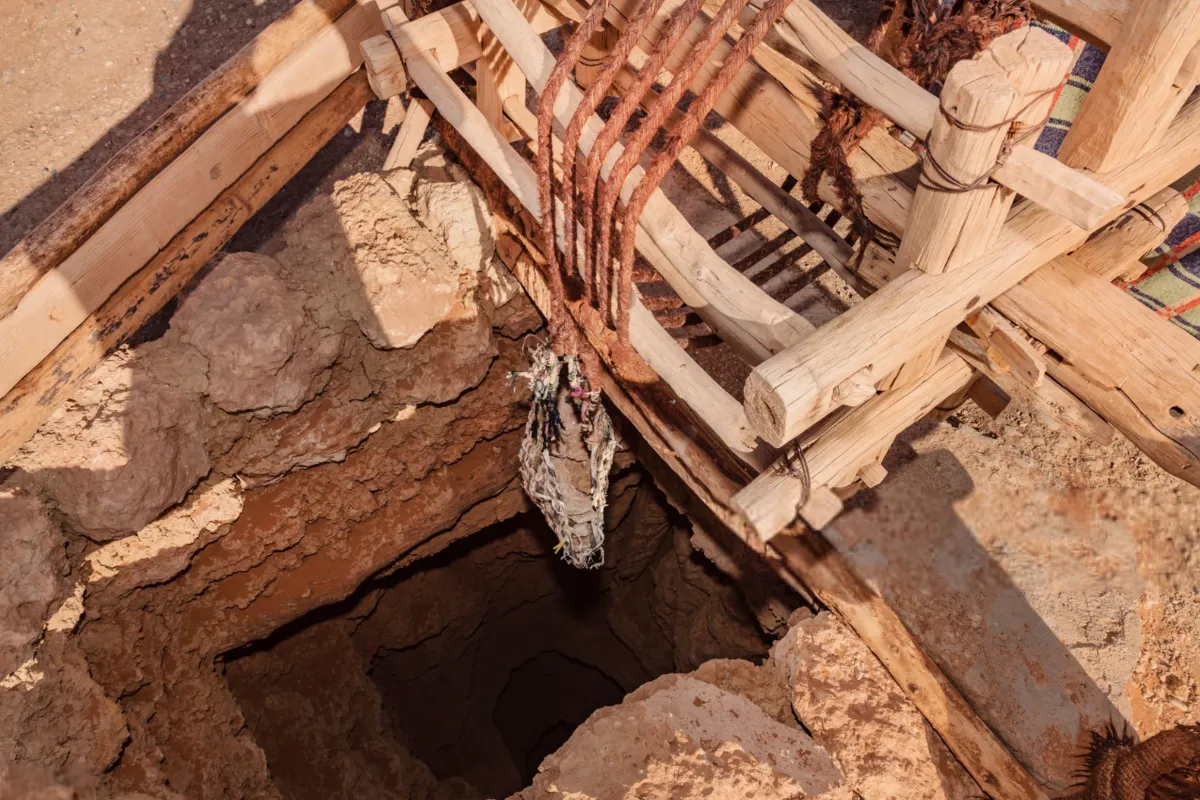The Khettaras function through an ingenious system of gently sloping underground tunnels that tap into the water table, allowing groundwater to flow by gravity to the surface where it irrigates palm groves and gardens. Above ground, a series of distinctive vertical shafts, appearing like a line of small craters across the landscape, mark the course of these underground channels. These shafts, spaced at regular intervals, once served as access points for the tunnels’ construction and continue to provide essential ventilation and maintenance access.
Construction of these tunnels required exceptional skill and precision. The original builders had to maintain exactly the right gradient – steep enough to allow water flow but gentle enough to prevent erosion. This delicate balance, achieved without modern surveying equipment, demonstrates the remarkable technological achievements of ancient desert civilizations. Some of these tunnels extend for several kilometers, creating an underground network that has sustained desert life for generations.
Today, while some Khettaras remain active and continue to provide water for local agriculture, others serve as living museums of sustainable water management. Visiting these ancient water systems offers insights into how past civilizations developed sustainable solutions for desert living – lessons that remain relevant in our era of increasing water scarcity and climate change.


